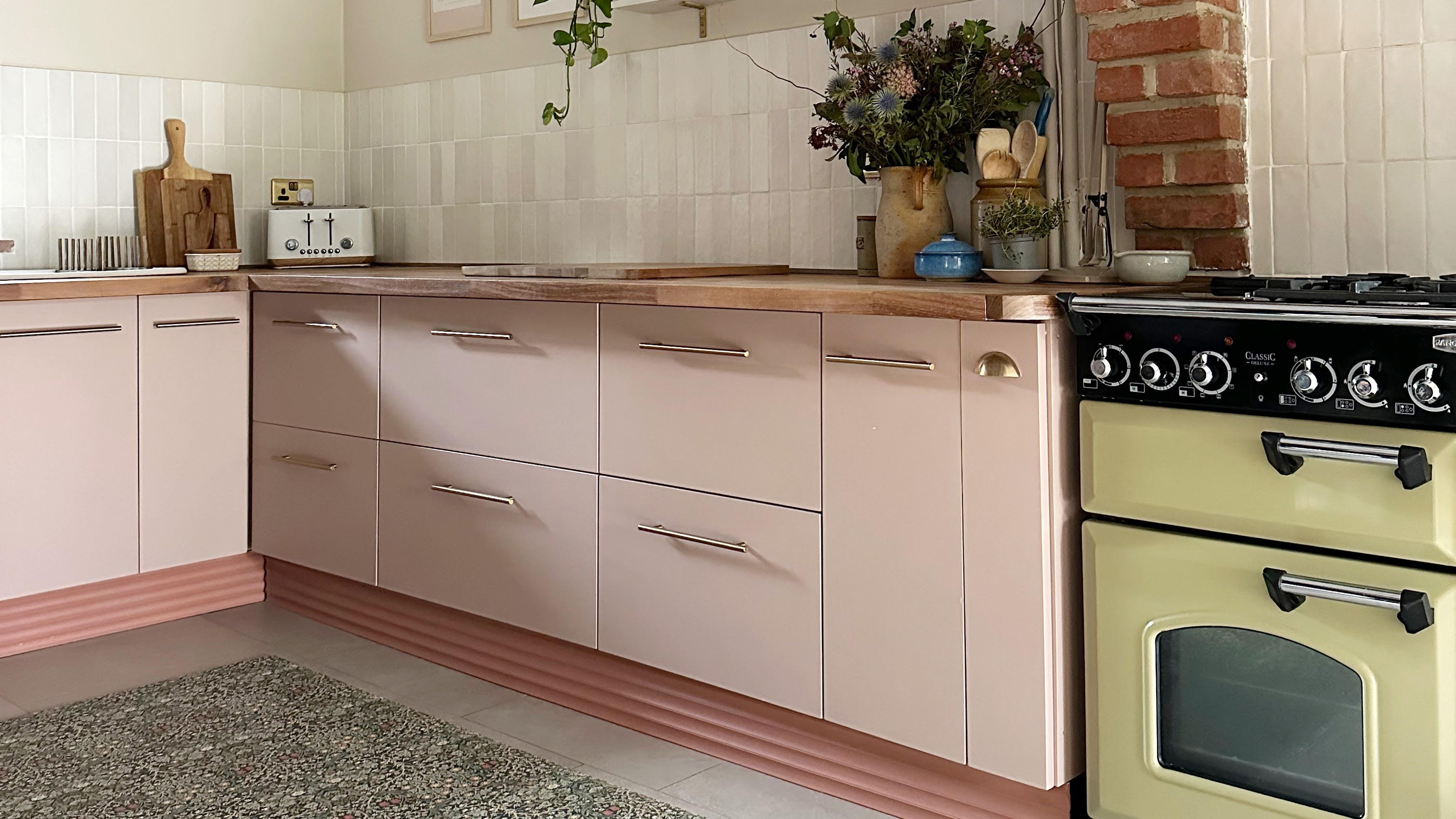
Are you looking to give your kitchen a high-end finish? A kitchen trim may be the answer, yet this important finishing touch element can sometimes go unnoticed.
Have you ever walked into a kitchen showroom with wanderlust? Or, you have been invited to view a friend's newly fitted dream kitchen and thought 'Wow'? It's probably down to the fact, that when planned and installed every effort was made to ensure all cabinetry was expertly finished with an edging that's known in the industry as kitchen trim or kitchen molding.
Kitchen trims and moldings aren't the most glamorous of fixtures when researching kitchen ideas, but they are a vital element of every impressive kitchen.
The best kitchen trim ideas
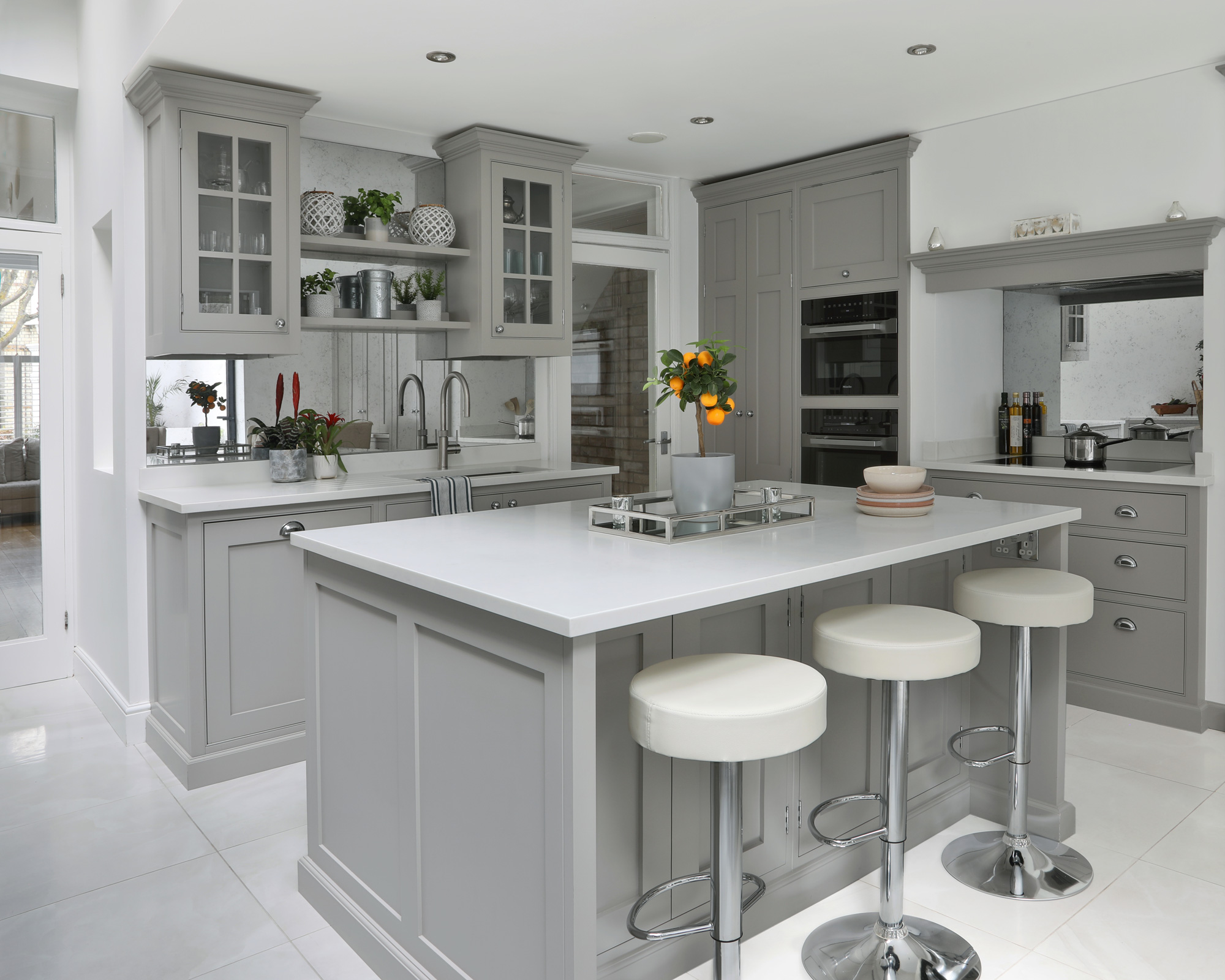
If you are looking for ways to give your kitchen design plan a finishing touch that offers sophistication and character then a kitchen trim is the ideal option.
"Kitchen trim, typically referred to as molding, includes a variety of decorative elements used to finish and enhance the appearance of kitchen cabinets, countertops, ceilings, and floors. It serves both practical and aesthetic purposes, adding depth, dimension, and a polished look to your kitchen," explains Alice Moszcznsyki, an Interior Designer at Planner 5D.
There are various varieties and styles of kitchen trim to choose from for every kitchen cabinet trend and they can be installed to the top, bottom and front of kitchen cabinets to create exquisite attention-to-detail that blends seamlessly into the kitchen scheme.
Whether you decide on a single embellishment for subtle practicality or want to dress your kitchen decoratively from head to toe, our guide will explain what type of kitchen trim mouldings are available and what kitchen cabinet ideas they suit.
1. Crown moldings
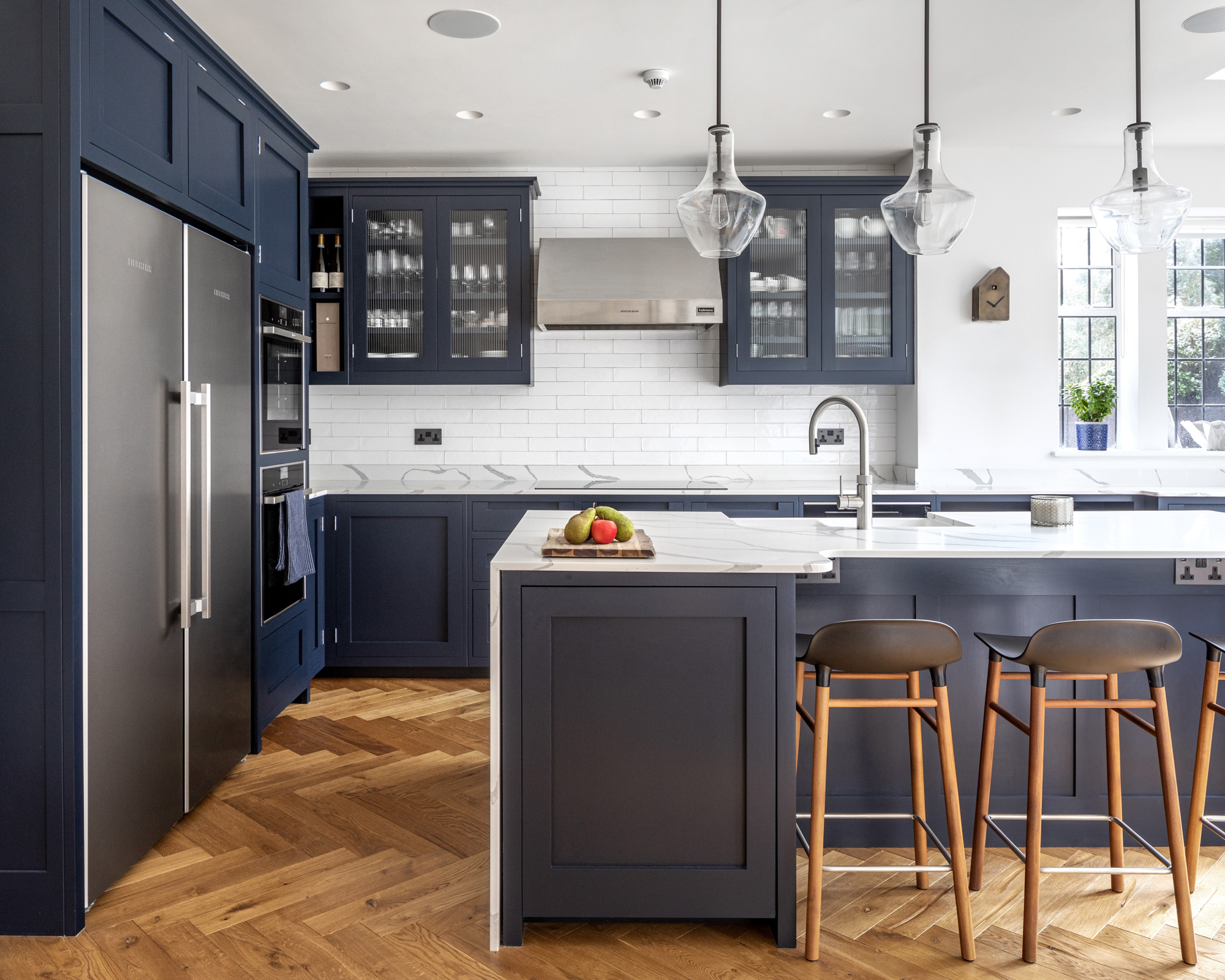
One of the most common decorative details in kitchen design is to add molding trim that is mounted to the top of kitchen cabinets, like a crown, hence its name.
"One of the most impactful uses of kitchen trim is on the crown molding, which sits atop your cabinetry and transitions the cabinets to the ceiling. Carefully selected crown molding can instantly add depth, dimension, and a touch of elegance to your kitchen," says Josh Qian, the COO and Co-Founder of Best Online Cabinets.
Historically decorative crown molding is more commonly used in period properties with traditional and shaker-style kitchens.
"Classic crown moldings tend to be more decorative and create a timeless and traditional feel that looks expensive," adds Josh.
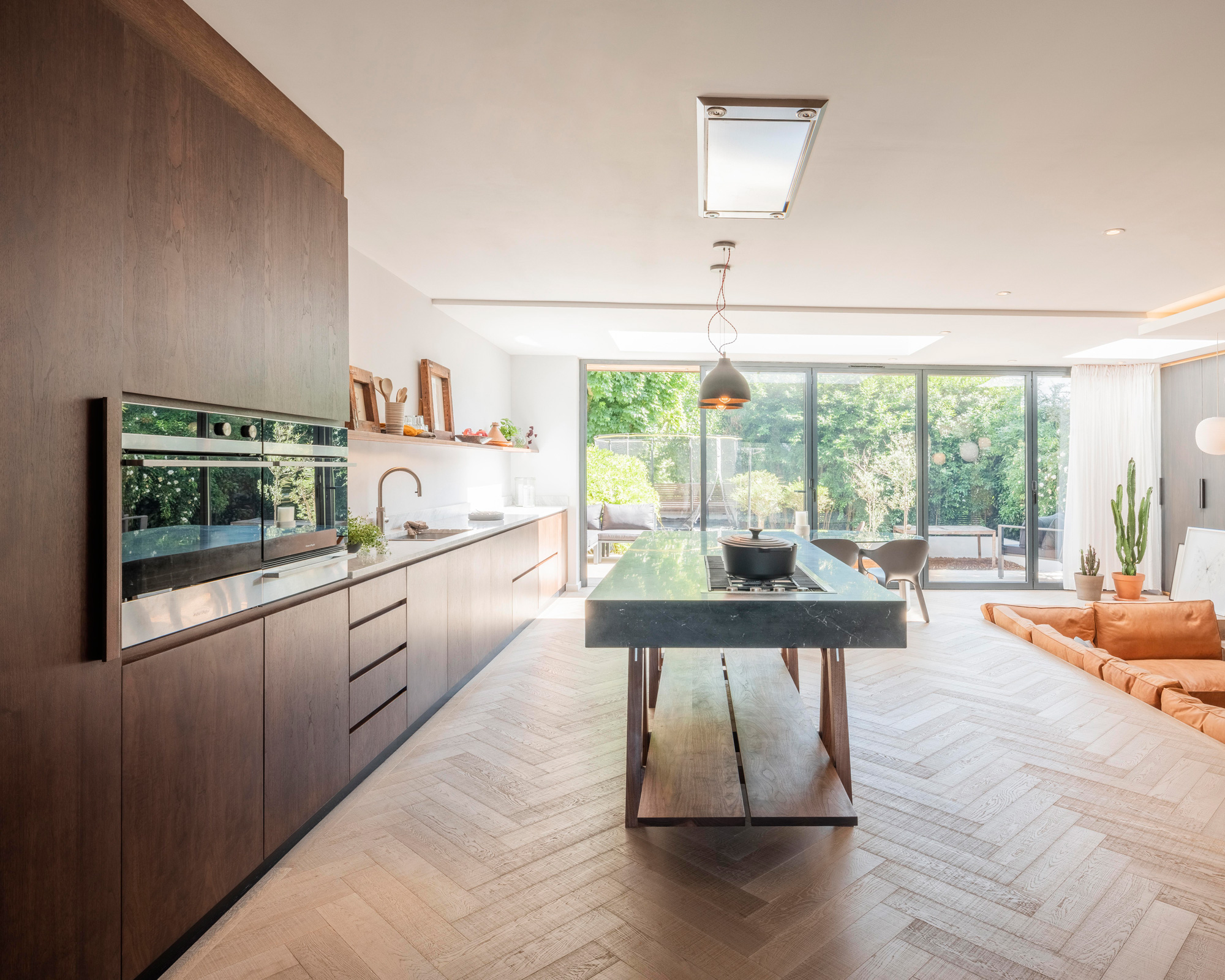
Contemporary kitchens with slab-style or flat-fronted doors do not really work with the addition of decorative and ornate crown molding.
That being said, crown trim or molding that is less ambiguous can be successful in contemporary kitchens to create a seamless vibe that flows with the architecture.
Sometimes panels often referred to as risers run along the top of cabinets right up to the ceiling that creates a frame around cabinets. The results form a built-in sense of streamlined modernism.
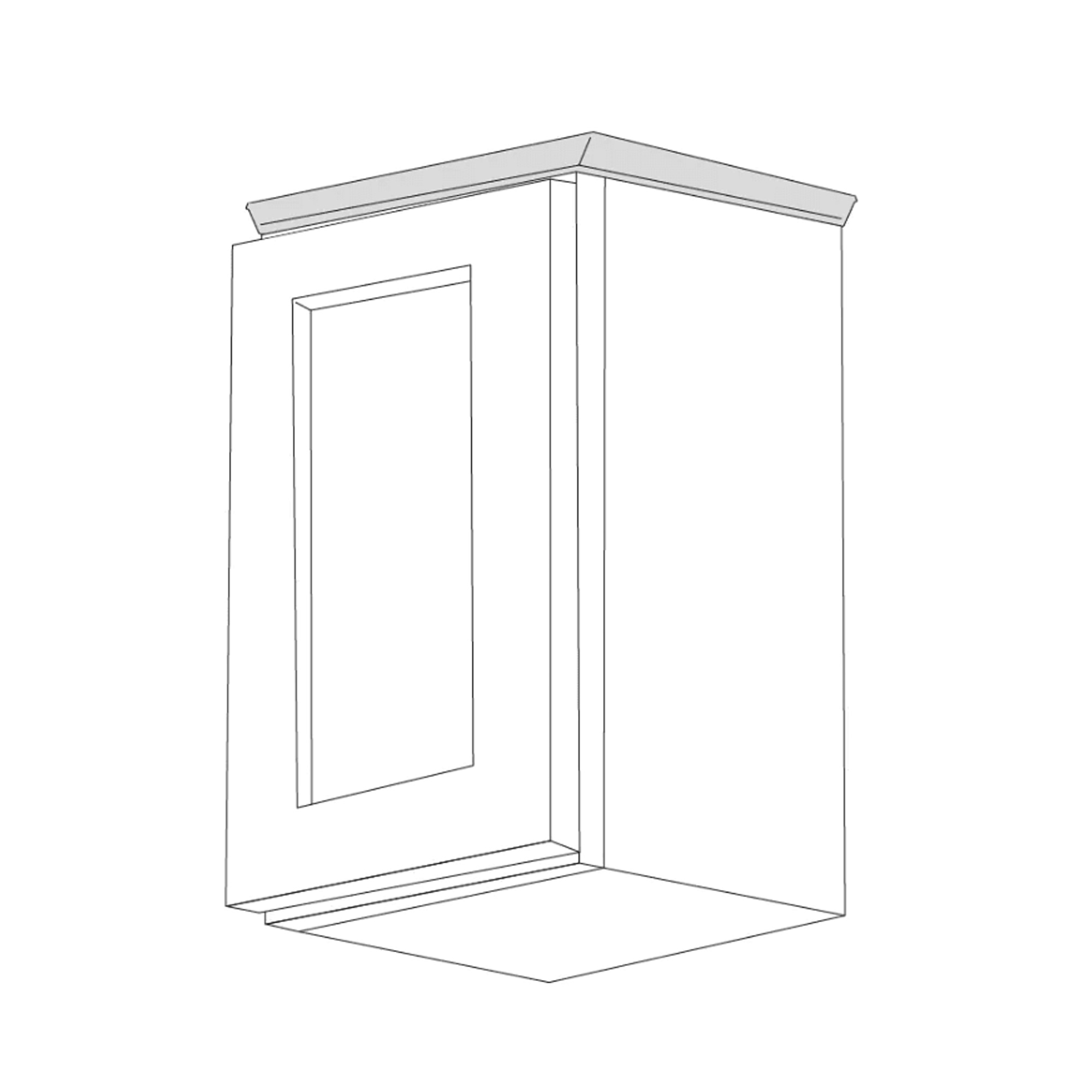
Product code: GC-ANG-CM4
Colour: Grey
Price: $171
This good quality crown molding can be used to finish the top of the wall cabinets.
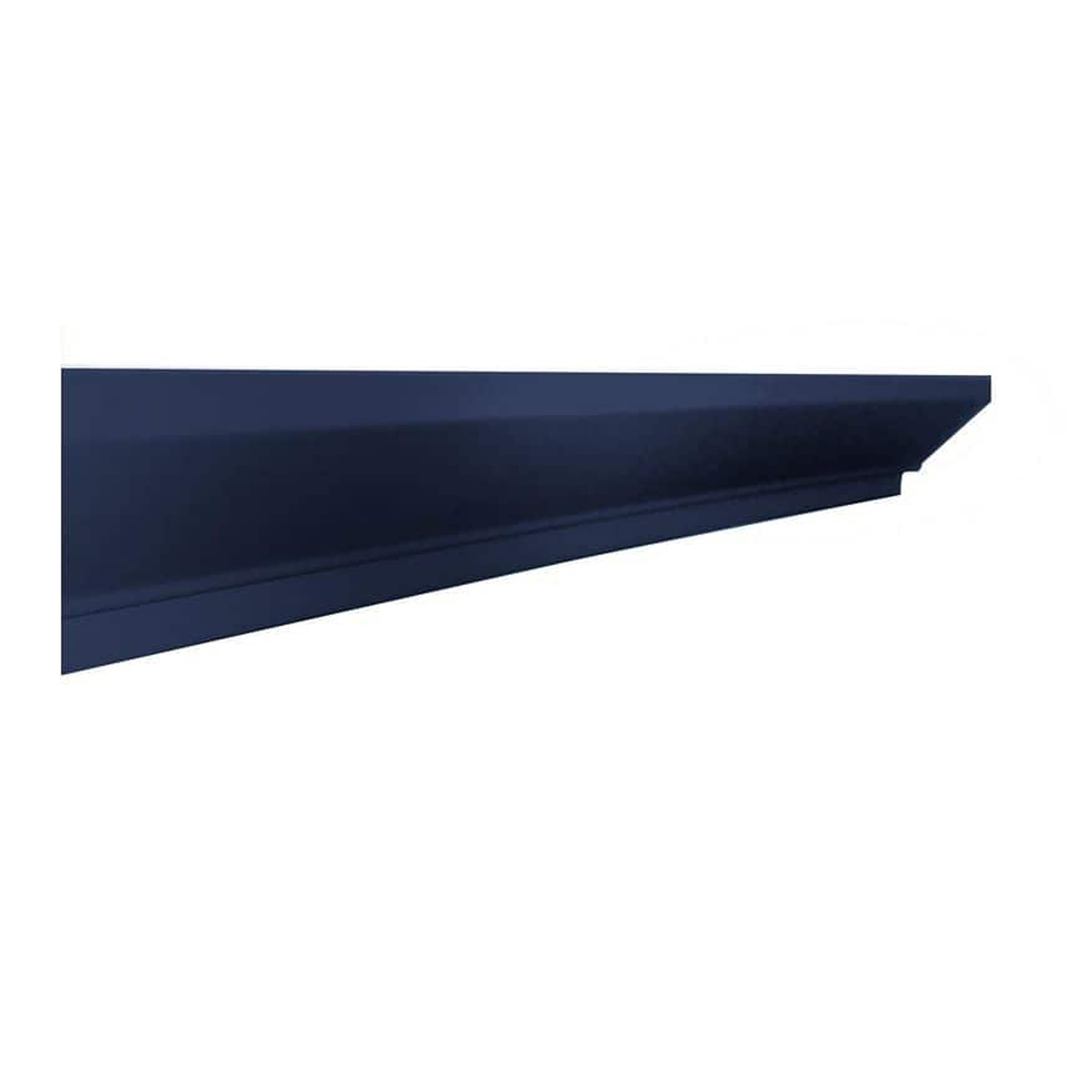
Size (in.): W2.75 x D2.875 x H96
Price: $61.22
This classic crown molding comes in striking 'Valencia Blue' so it is ideal for navy kitchens. This crown molding can be used to trim upper cabinets to hide any gaps between the cabinetry and the uneven surface. It can also be used to finish the end run of Matching Toe Kick. Scoring 3.5 stars customers are impressed by the product's finish and ease of cutting.
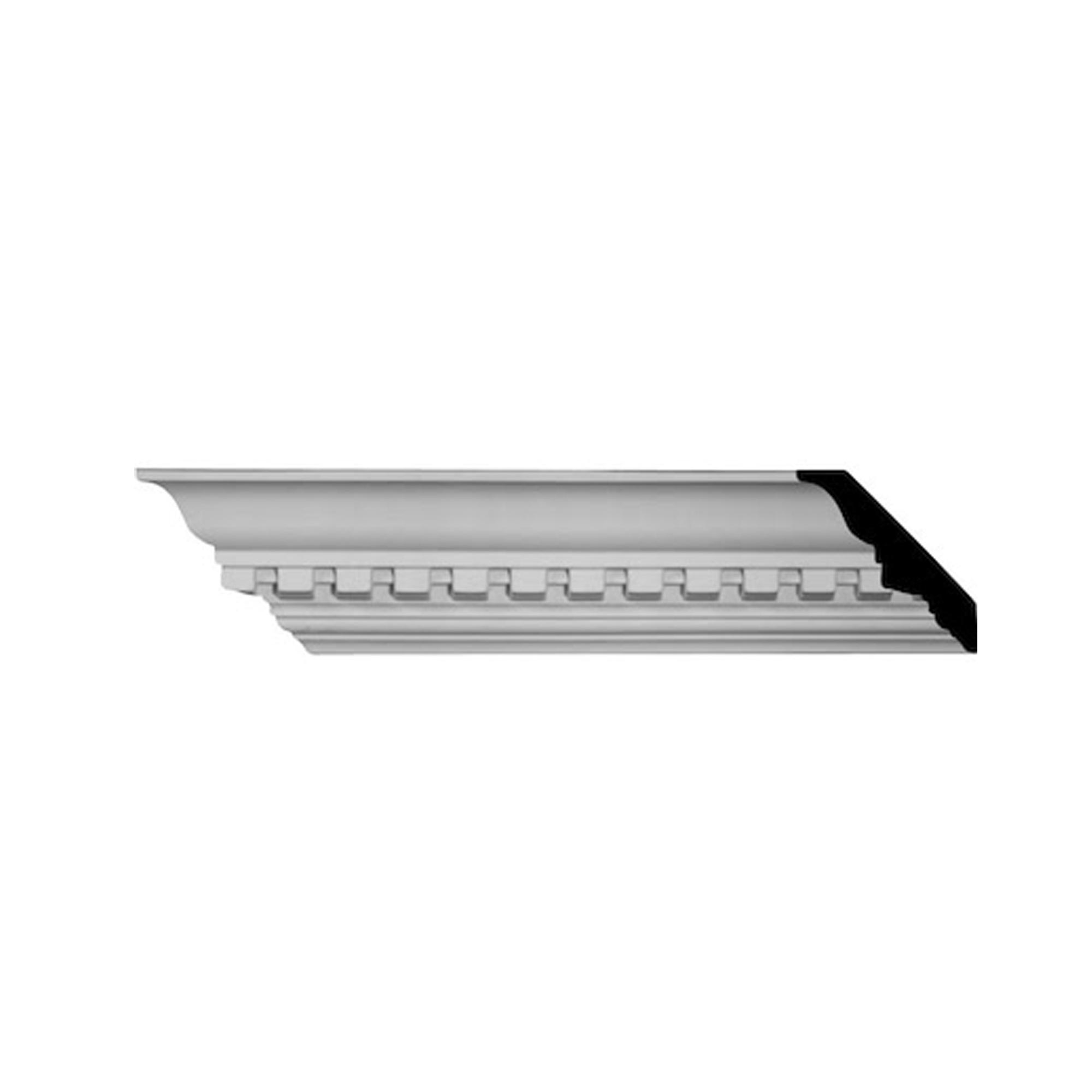
Size(in.): L 7 ft x H10.5 in x D 3 in
Price: $80.88
This dentil effect crown molding is a decorative finish that offers decorative three-dimensional teeth-like elements, hence its name. Made from primed polyurethane this crown molding is lightweight and so super easy to install. It's available in packs of two.
2. Cabinet trims
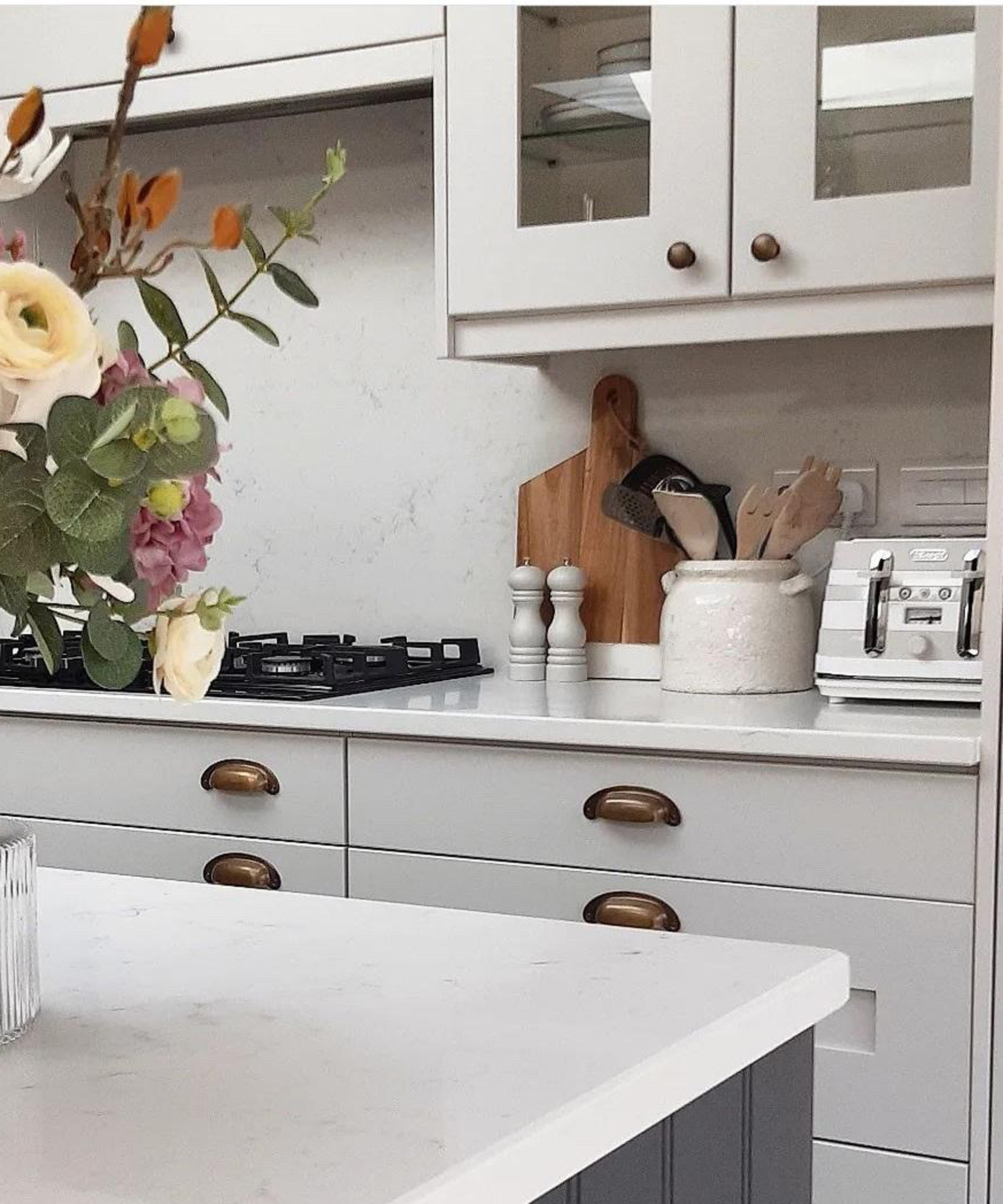
Cabinet trims are lengths of edging that can be added to the underneath of upper-cabinetry to give it a more custom and detailed finish.
"Adding a subtle trim detail can instantly elevate your kitchen's overall look and feel," explains Josh.
"From simple, clean-lined designs to more intricate, decorative patterns, it allows you to customize your cabinets to your personal taste."
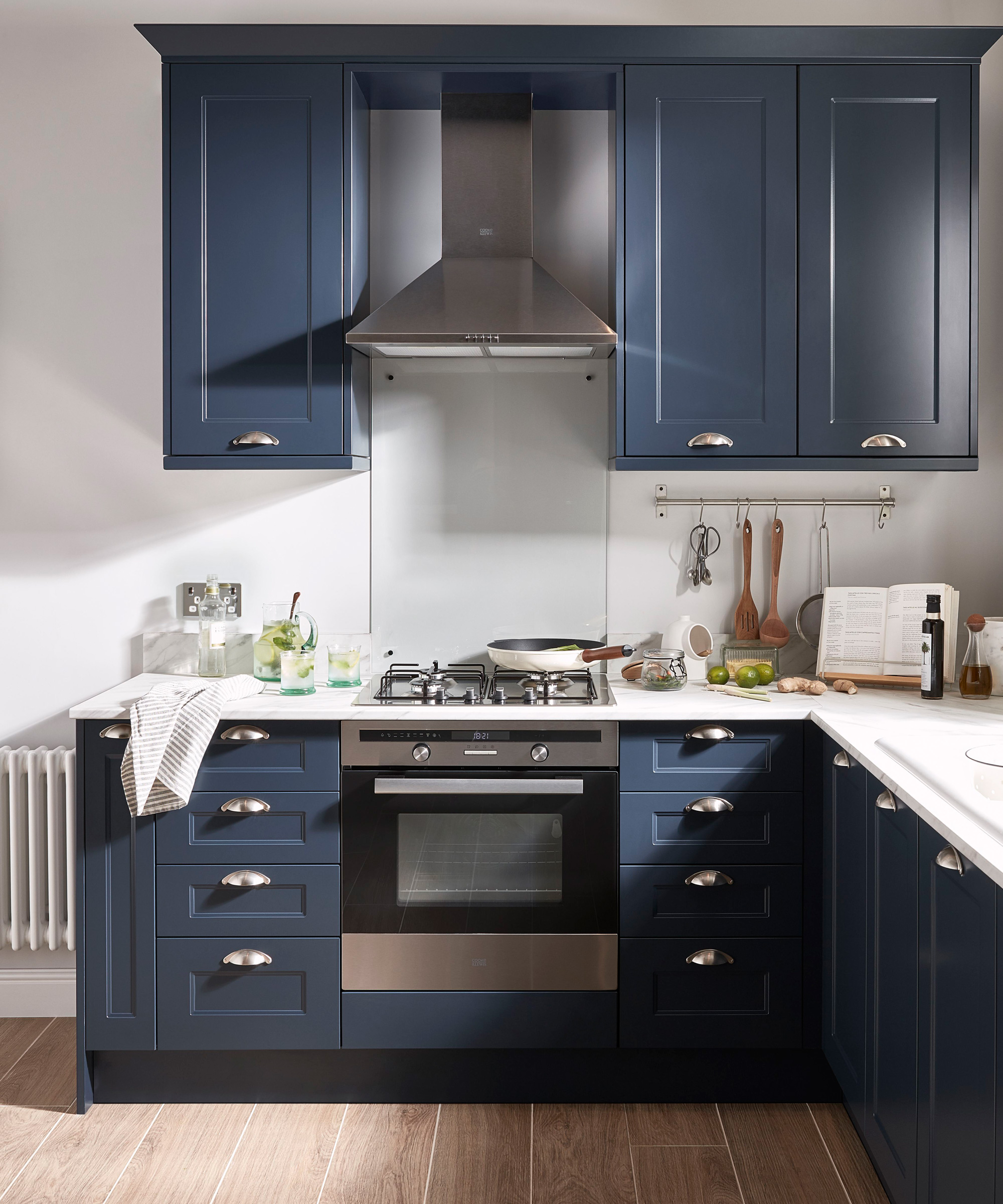
Another area where kitchen cabinet trim can make a significant impact is on the face frames of your cabinets. From large shaker-style panels to narrow dado rail-style embellishments, the easy update creates transformative results.
"Trim applied directly to cabinet doors and drawer fronts can transform plain surfaces into elegant panels, adding depth and texture," says Alice Moszcznsyki
"This can include raised panels, beadboard panels, or applied molding around the edges. I find these to be the most fun to play with and really change the look of your kitchen."
3. Skin panel trims
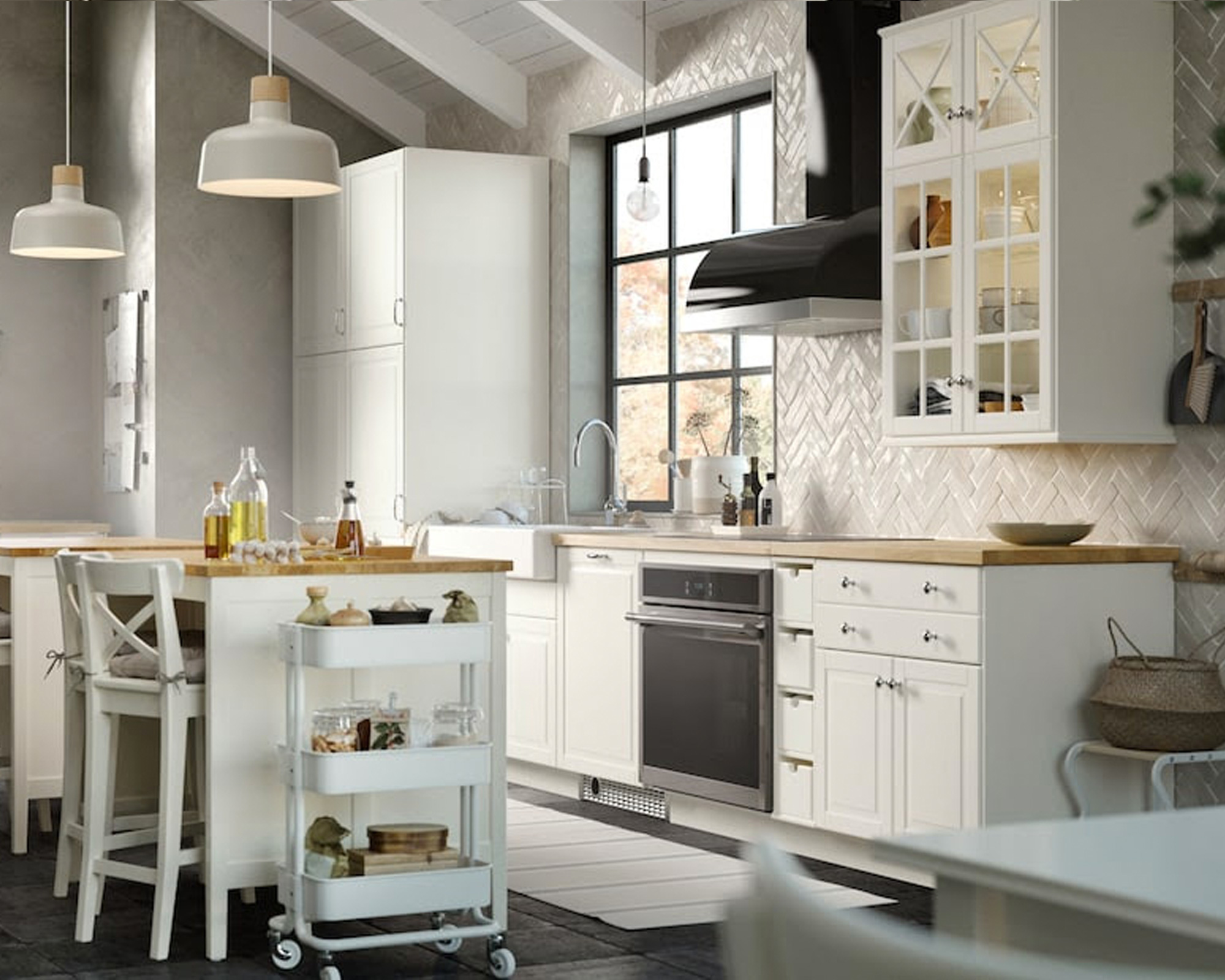
Skin panel trims are custom exterior panels installed on the outside of cabinet carcasses to create an attractive finish that either matches or contrasts with kitchen cabinet doors.
Scribe moldings and fillers can then be used to then fill in any gaps.
4. Base moldings
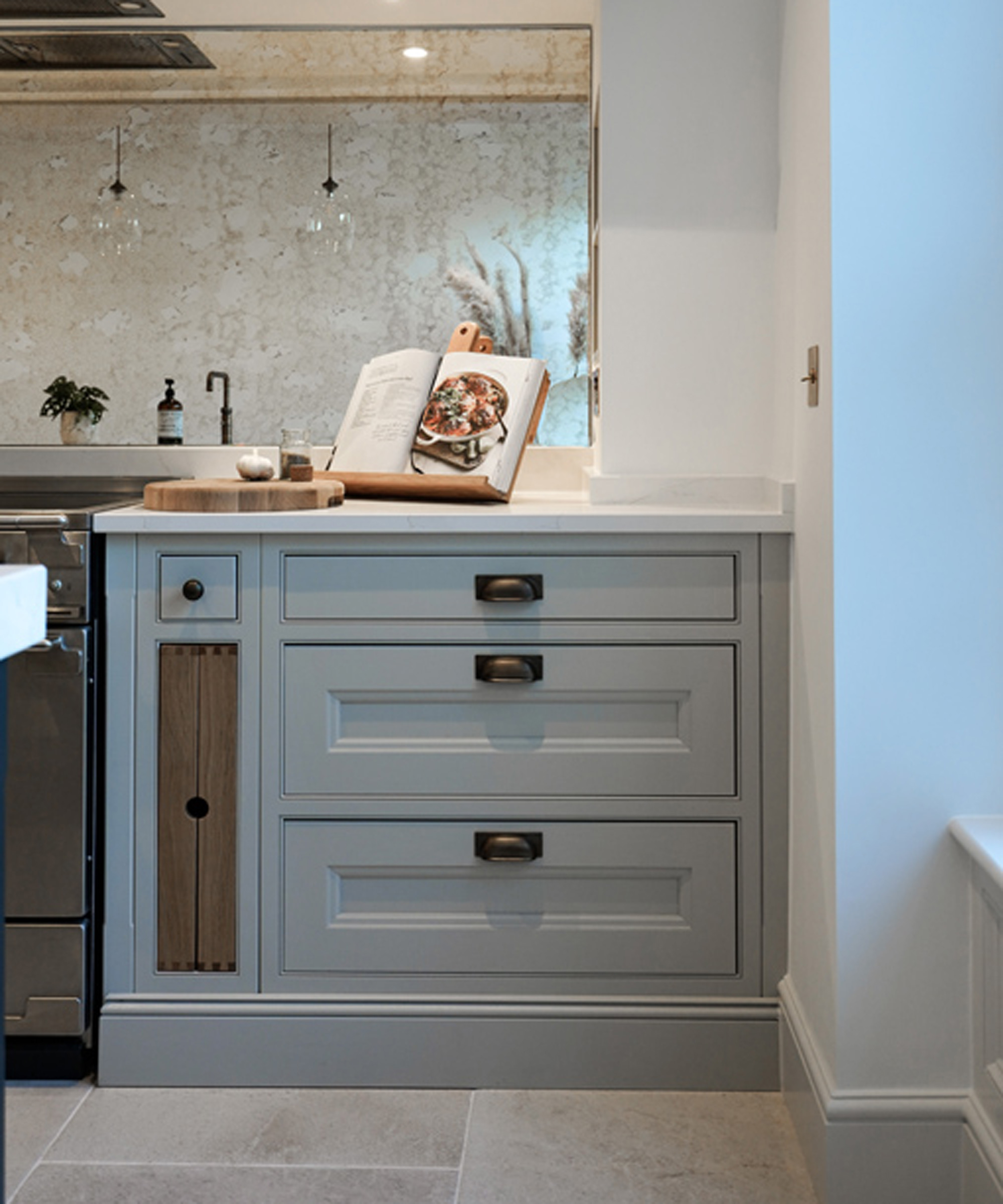
This type of molding is used to cover the bottom edge of cabinets, and it comes in a variety of styles and colors to choose from. Furniture base molding is a strip of wood that extends slightly beyond the cabinets themselves. So, will decoratively join base cabinets to the floor with a luxurious finish.
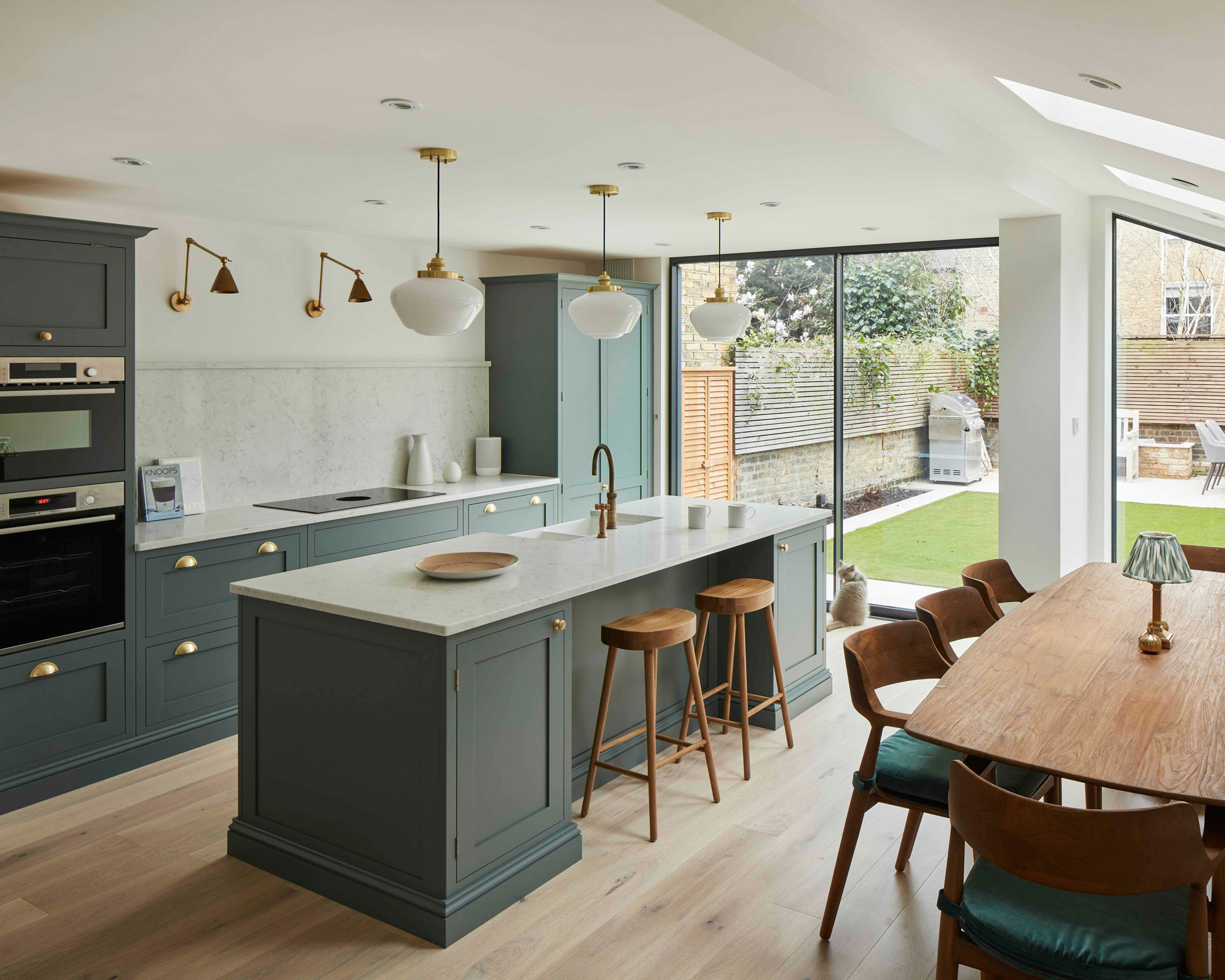
Base moldings look particularly impressive installed at the bottom of kitchen islands. The enhancement anchors the standalone wall unit effortlessly unites the feature with matching cupboards and units in the room.
"A range of base trim options, from solid wood to durable, moisture-resistant materials, ensures your kitchen's foundation looks as polished as the rest of the room," says Josh.
5. Toe-kick trims
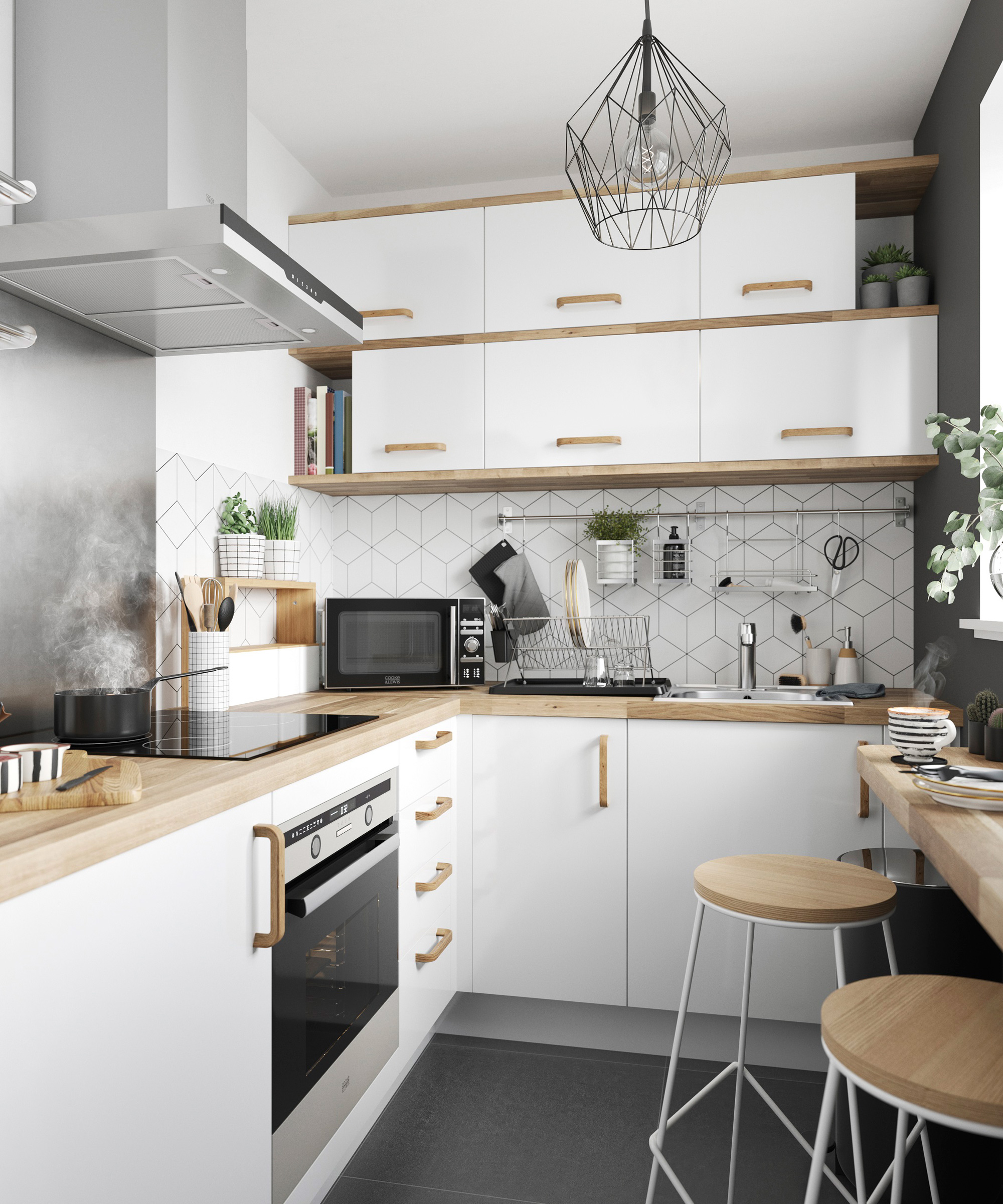
Differing from Base moldings toe kick trims or kickboards are that strip of wood that runs along the bottom of your base cabinets, between the carcase frame and the floor.
Unlike base moldings, toe kick trims recede slightly offering room for 'toes'. They can be a more simple and less expensive option to decorative base moldings. However, budget-friendly toe kicks still have an important job of protecting cabinets and stopping dust and debris from collecting under kitchen units.
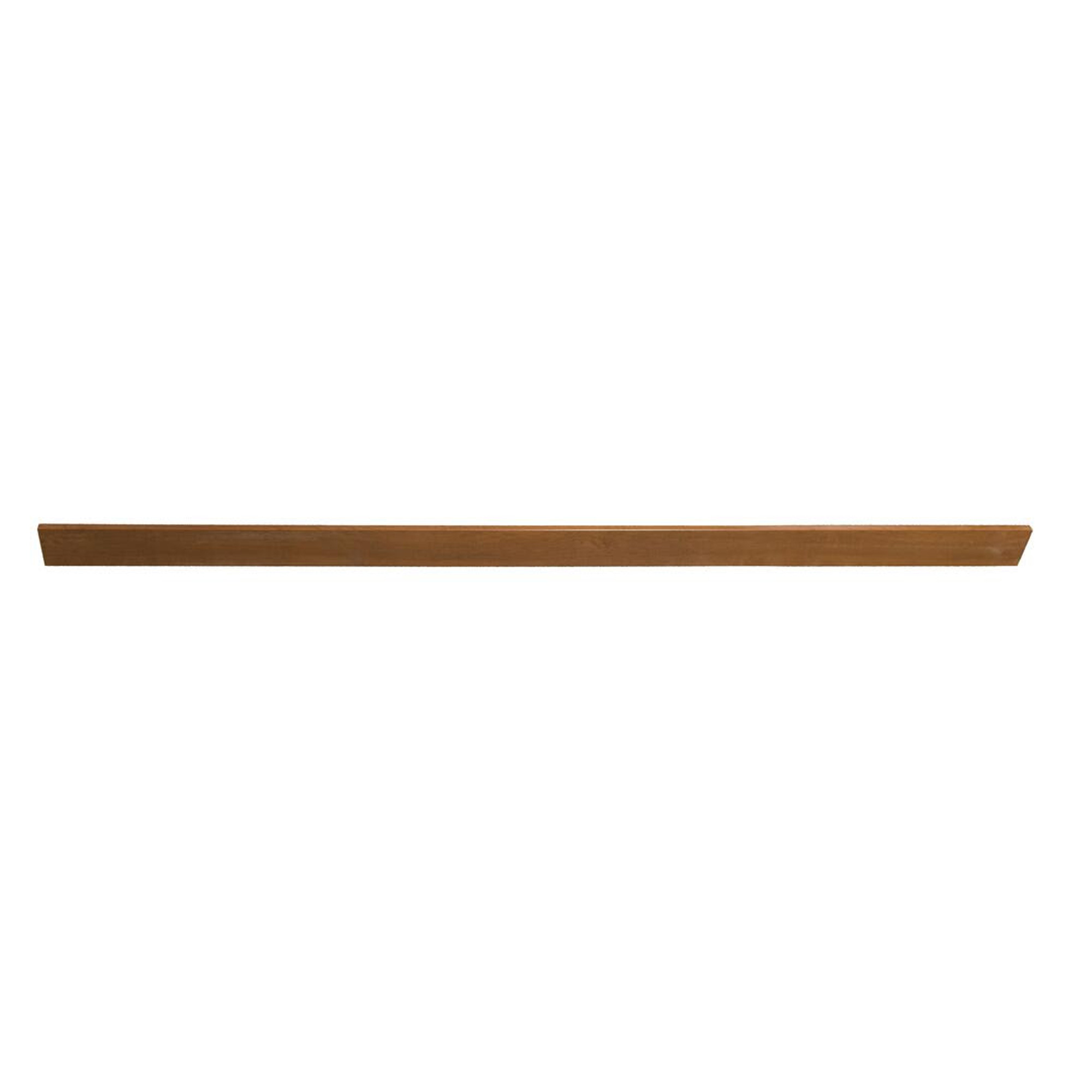
Size (in.): L 96 x H 4-1/2 x D 3/4
Price: $21.37
This simple Auburn, engineered wood core, toe kick comes with clips for easy installation. There are 19 other shades to choose from so finish shouldn't be a problem. Assembly instructions can also be found online.
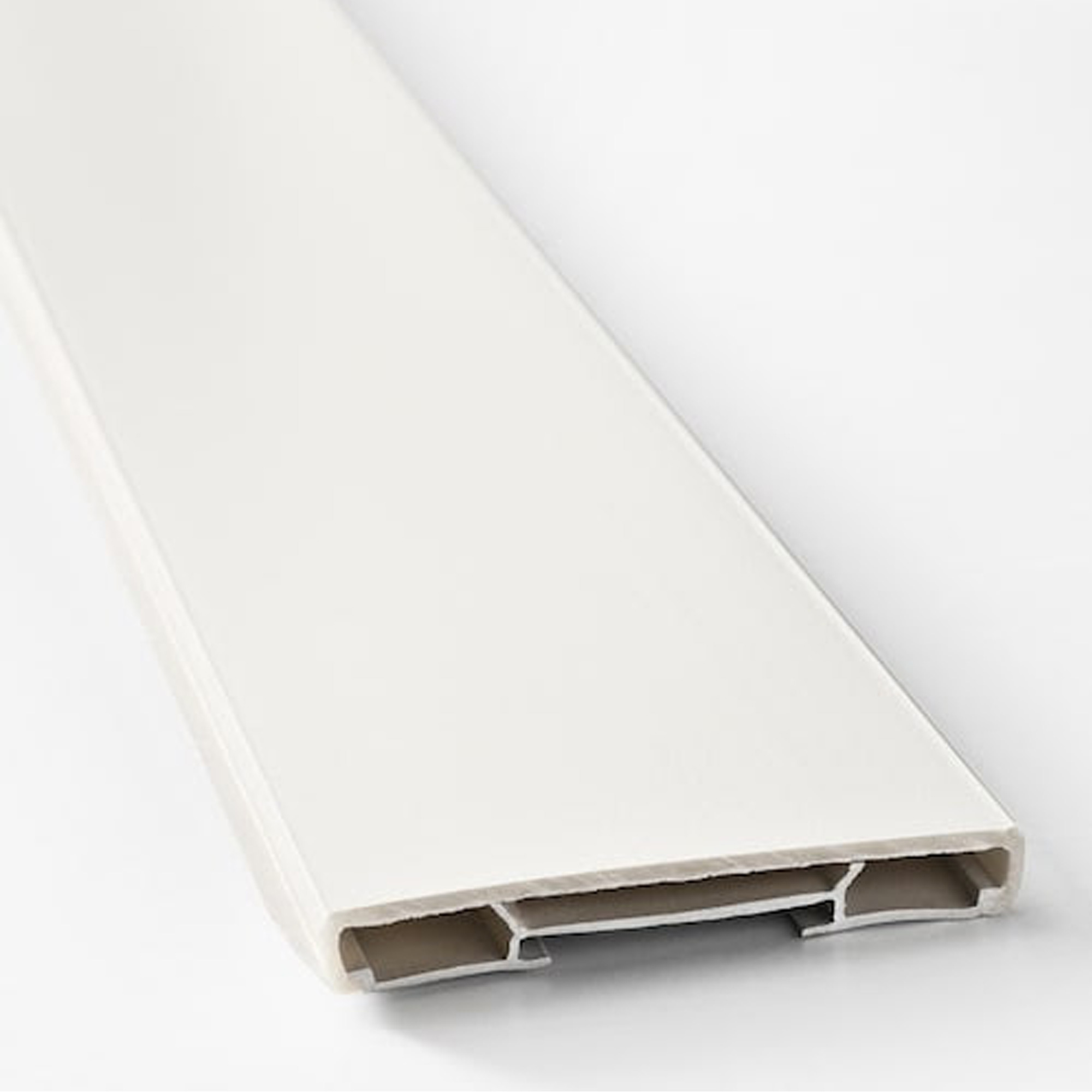
Size: (in.) W 84 x H 4.5 D: 3/8
Price: $38
Complete the look of your kitchen by adding a classic toe kick to cover the gap between the floor and the base cabinets. This plinth scored 4 stars. Customers valued the 25 year limited warranty, ease of installation and value for money.
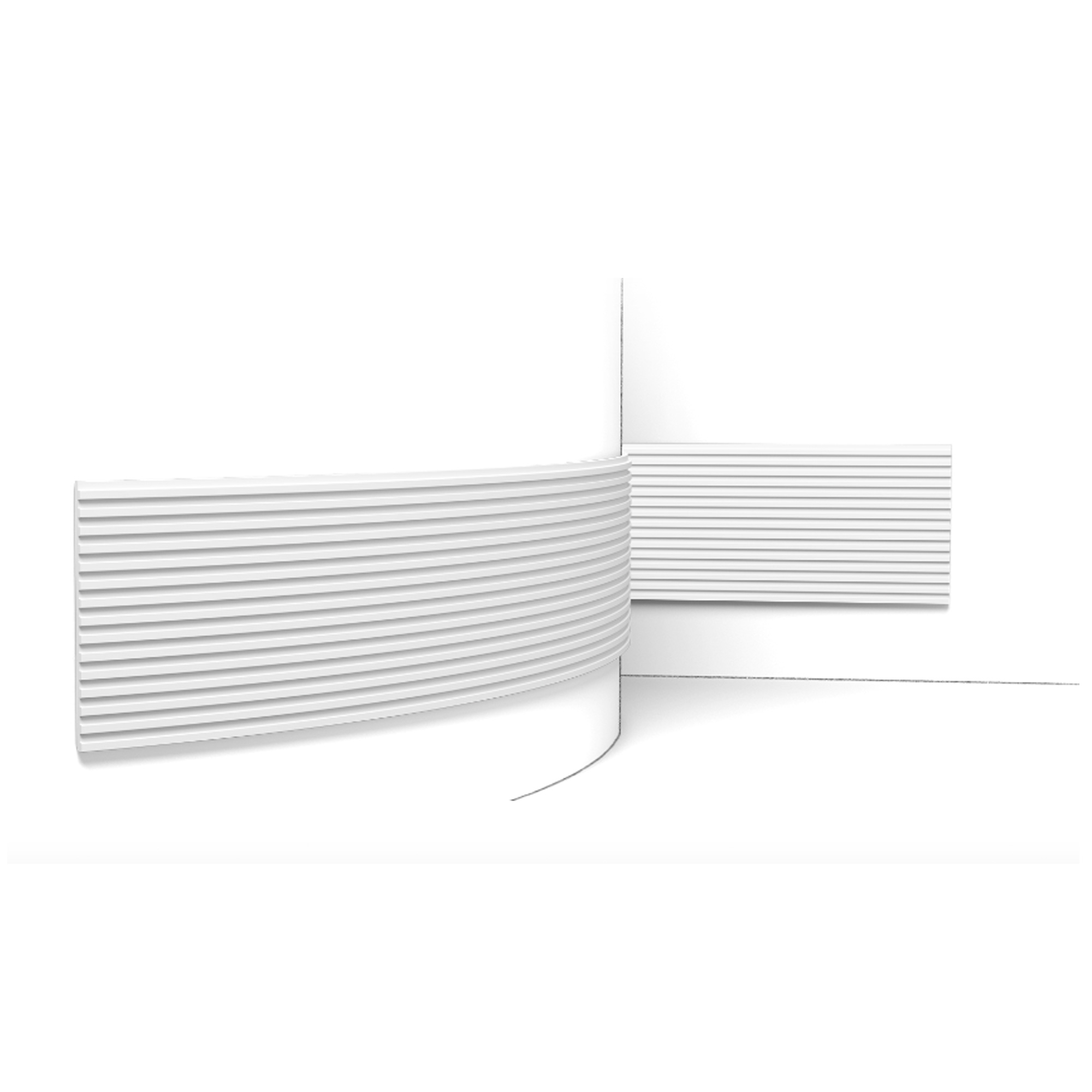
Size (in.): L 78.74 x D 1.3
Price: Available soon
For an on trend fluted toe tick, like Hannah Otto's, this is your go to product. RIPPLE and TRACK are Orac Decor’s newest 3D Wall Covering panels, now available in Duropolymer. Perfect to cover full ceiling heights in one go or for low wainscoting in demanding environments. Only side A is primed. On side B, use two coats of final paint or apply a primer coat first, followed by the final paint.
Selecting the perfect trim for your kitchen installation will ensure every detail is considered. Many kitchen trim and molding elements come as standard and can be discussed with your kitchen designer when planning and designing your dream kitchen.
However, if you've just moved home and are looking to update an inherited kitchen or perhaps need tips to refresh a rental kitchen, then these kitchen trim ideas are transformative.
FAQs
What is the difference between kitchen trim and kitchen molding?
"Trim refers to any decorative finishing element used to cover gaps or joints while molding specifically refers to shaped strips of material used for decorative purposes. Trim is versatile and can be applied in a lot of different scenarios throughout the kitchen. Molding, with its more ornate designs and larger size, is typically used for features that require more visual impact, such as crown molding or decorative panels." explains Alice Moszcznsyki
"Trim typically refers to the more narrow, linear elements, while molding is generally wider and more decorative. When selecting the right option for your kitchen, it's essential to consider your space's overall style and scale. Guidance on the best trim and molding choices to complement your cabinetry and achieve the desired aesthetic can be invaluable, " Agrees Josh.
How do you install kitchen trim and molding?
"Basic trim like base or toe kick molding is pretty straightforward and can often be installed using finishing nails or construction adhesive. For more intricate installations such as crown molding or detailed cabinet trim, professional installation may be recommended to achieve precise cuts and seamless joints," explains Alice Moszcznsyki.
"I always look for trim and molding options at stores like Home Depot or Lowe’s. These stores offer a wide range of styles and materials to choose from."
What tools are needed to install kitchen trim and molding?
"Installing trim is relatively easy if you have the right tools. I always recommend using high-quality wood glue or adhesive caulk for secure attachment," says Andy Taylor, Managing Director at Paramountstone.
"For beginners, self-adhesive trim strips are a great option as they are easy to apply and adjust. Retailers like Home Depot and Lowe's offer a wide range of trims and moldings, making it convenient to find what suits your kitchen design."







